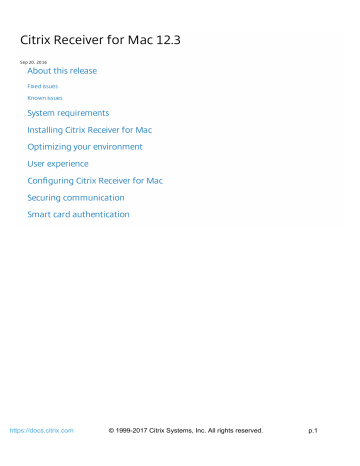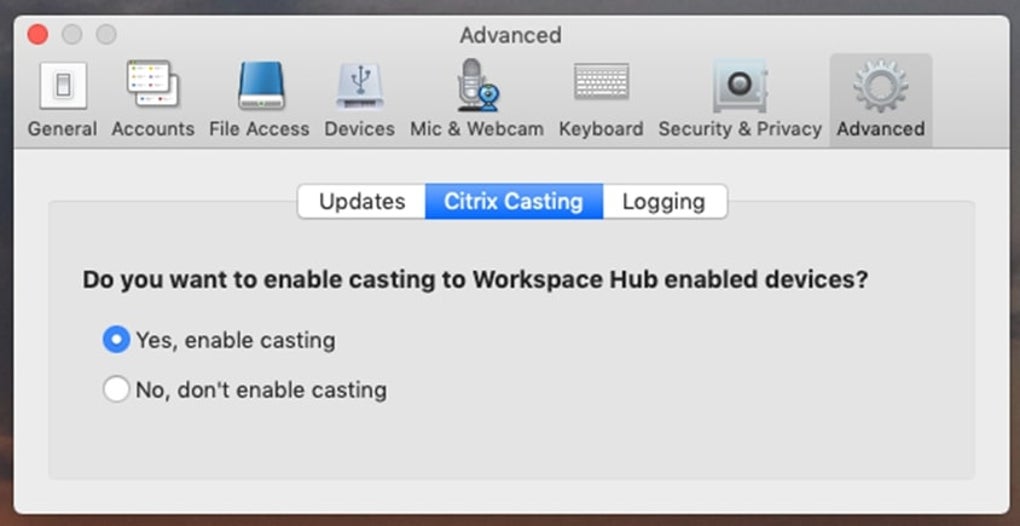
Note:Use the Allow: VID=xxxx PID=xxxx rule when a specific device must be on top of the device rules list. The Allow: VID=1230 PID=0007 rule allows the device with Vendor ID 1230 and Product ID 0007: Add the USB Device rule as in this example,

Open the Local Group Policy Editor and go to Administrative Templates > Citrix Components > Citrix Receiver > Remoting client devices > Generic USB Remoting.Some advanced functions such as, data compression is provided by these dedicated virtual channels:ĭisabled ( not recommend using USB redirection for keyboard )ĭisabled ( not recommend using USB redirection for mouse device ) īesides generic USB redirection, XenDesktop provides optimized redirection methods for some specific USB devices. Launch XenApp session and redirect the audio device. Go to ComputerConfiguration->Administrative Templates->Citrix Receiver->User experience and right click edit “Audio through Generic USB Redirection”Įnable the policy and on client run gpupdate /force from command prompt On Client launch GPO by running gpedit.msc adml from C:\Program Files (x86)\Citrix\ICA Client\Configuration\en-US to C:\Windows\PolicyDefinitions\en-US Note: For x86 Client instead of Program Files (x86) go to Program Files On Client copy receiver.admx from C:\Program Files (x86)\Citrix\ICA Client\Configuration to C:\Windows\PolicyDefinitions Settings for Audio redirection of XenApp (per user )įor Server OS enable audio through Generic USB from client policy, supported from Receiver 4.5 and XenApp / XenDesktop 7.8įor enabling audio redirection for logged in user you must perform following steps: Capture mode (04) is the recommended mode for signature devices.įor more details follow link. If no rule is specified, then the device is handled as Interactive mode (02). If the device is allowed, the host then checks the Client USB device optimization rules for the device. When a user plugs in a USB input device, the host checks if the device is allowed by the USB policy settings. In XenApp and XenDesktop 7.6 FP3, the Client USB device optimization rules can be applied to devices to disable generic usb optimization for interrupt devices, or to change the optimization mode. HKLM\SOFTWARE\Wow6432Node\Citrix\PortICA\GenericUSB\DeviceRules for 64-bit OSĬreating Client USB device optimization rules HKLM\SOFTWARE\Citrix\PortICA\GenericUSB\DeviceRules for 32-bit OS You can find the default rules in the following registry in virtual desktop:Ĭaution! Refer to the Disclaimer at the end of this article before using Registry Editor. Open Desktop Studio on XenDesktop server and click Start > All Programs > Citrix > Desktop Studio.Ĭlick Add on Client USB device redirection rules. If the first match is a Deny rule, the matched device is only available in the local desktop. If the first match is an Allow rule, the matched device is allowed to be redirected to the virtual desktop. The first match for any devices is considered final.

When the user tries to redirect USB device to Virtual Desktop, it is checked against each USB policy rules in turn until a match is found. In the Policy console, scroll down to USB Devices.Ĭlick Add on Client USB device redirection. Open Desktop Studio on XenDesktop server, click Start > All Programs > Citrix > Desktop Studio. To use it, USB redirection policy and specific redirection rules must be enabled and configured. Generic USB Redirection Configurationīy default, USB redirection configuration is not enabled.
CITRIX RECEIVER FOR MAC 12.3 DRIVERS
It avoids the requirement for compatible device drivers on the client machine and the driver is expected to be supported on the virtual desktop only. Generic USB redirection works at a low level and redirect USB request and response message between client machines and XenDesktop virtual desktop. With this feature, the end users have the ability to interact with a wide selection of generic USB devices in their XenDesktop session as if it had been physical plugged into it. Generic USB redirection feature allows redirection of arbitrary USB devices from client machines to XenDesktop virtual desktops.


 0 kommentar(er)
0 kommentar(er)
